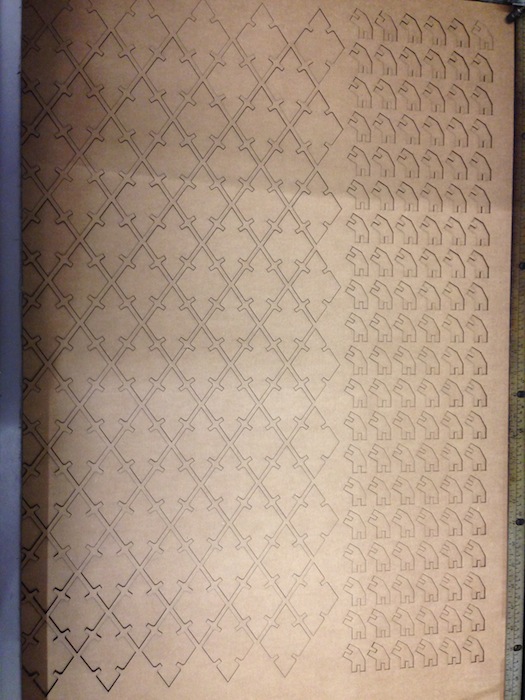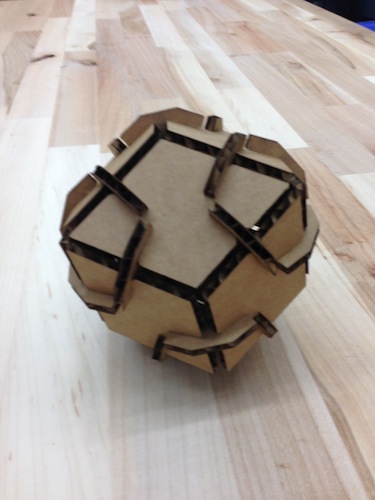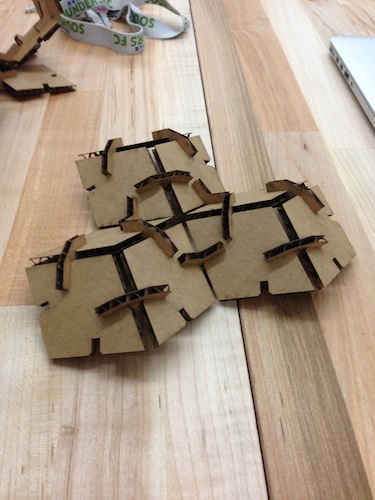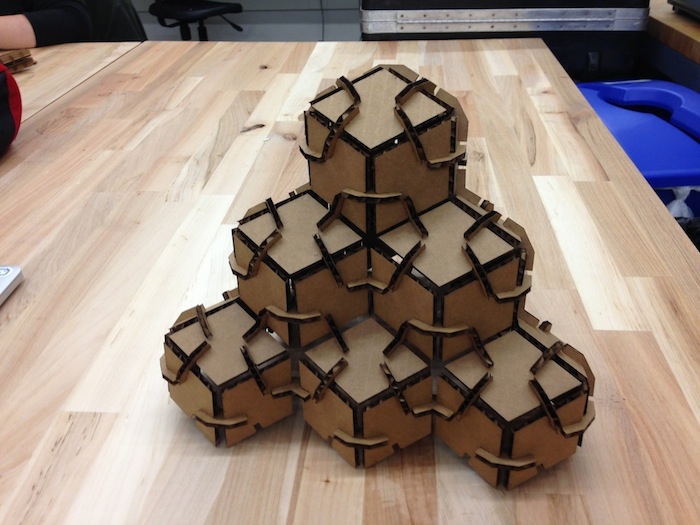Week 1: Press Fit Construction Kit
Introduction and Background
This week's task was to use the laser cutter to cut out 2D pieces in cardboard that would snap together to form some 3D object. I was immediately attracted to doing something related to geometry so I decided to make a set of rhombuses and 120 degree connectors in order to produce rhombic dodecahedrons. I was particularly interested in them because they are one of the few polyhedra that tesselate space and they produce a particularly interesting honeycomb when doing so.


Design
I used Kokopelli to design these rhombuses, taking advantage of my previous coding knowledge to design via python. Kokopelli was also quite well suited to parametrized design. I was able to design the shapes in 2D and the switch layouts to a 3D view to see how the pieces fit together.

I actually designed the rhombuses using the wrong set of angles but it was quite easy to adjust to the correct angles as specified in the diagram above because everything was designed parametrically.
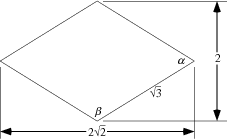
I ran into another problem after printing a couple of test shapes because the original connectors I was using were too thin and the snapping system I had employed wasn't robust enough. I quickly revamped the design with thicker connectors and traded the snapping system for deeper slots.
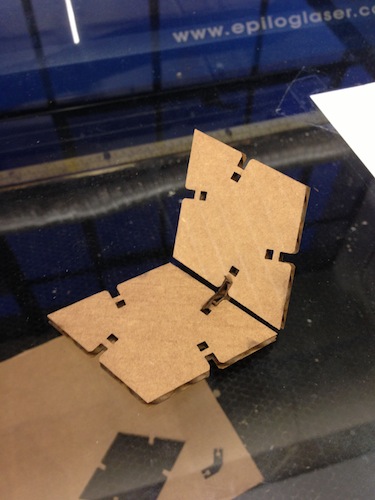
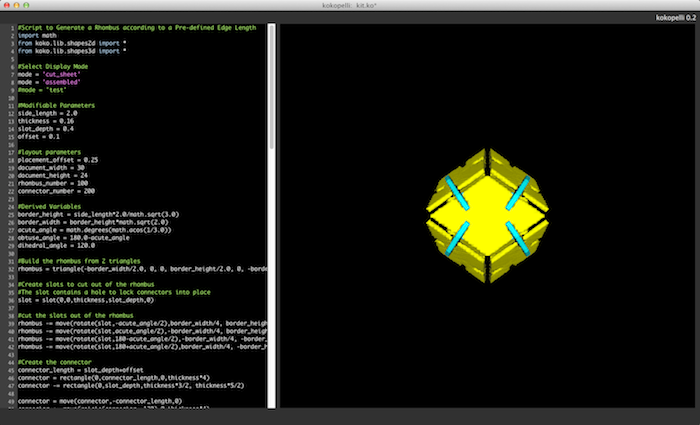
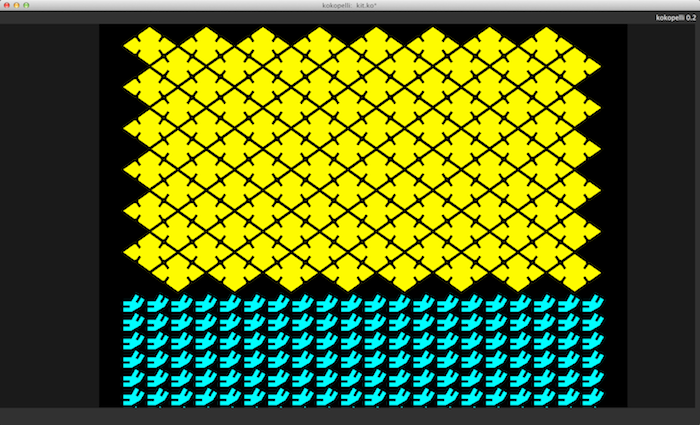
Download Files
Results
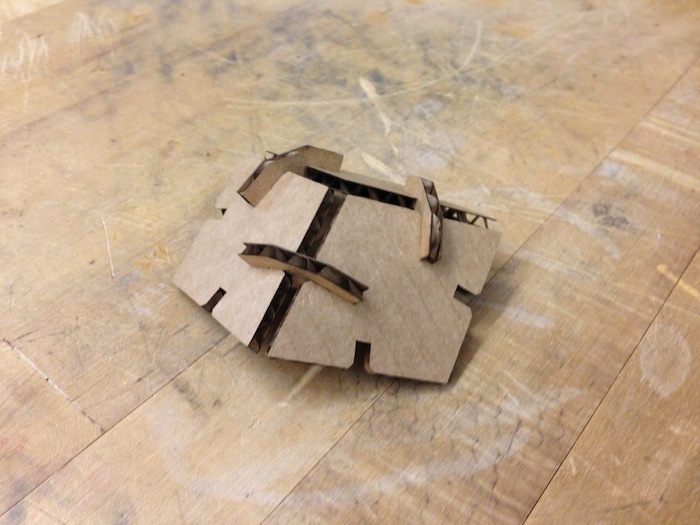
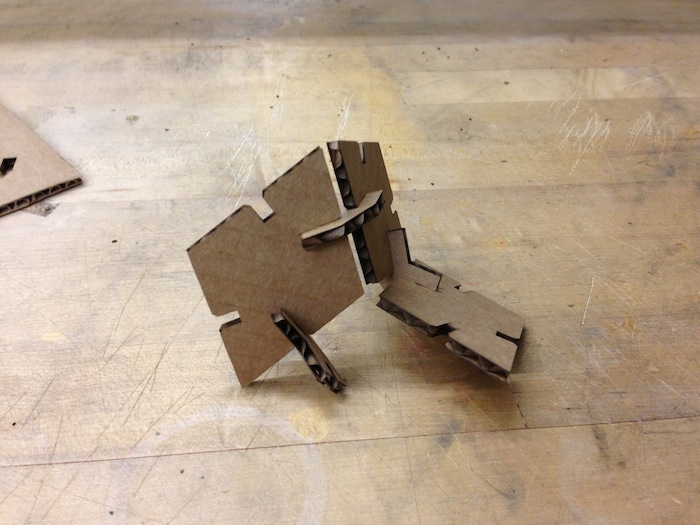
After fixing those first couple of errors I went on to producing these test pieces. With these pieces I was able to verify that I could assemble a group of 3 pieces and that I could use the connectors as both interior and exterior angles.
Once I had verified that I could begin mass producing them and ran a job to produce 200 connectors and just under 100 rhombuses. With these produced I was able to start playing around with the pieces. I first created a single dodecahedron and then created a single layer wave of dodecahedrons.
I finished by demonstrating the tesselation with a large group of dodecahedrons. I also ran out of connector pieces and learned that the rhombuses themselves could be used as a sort of connector, although they started bumping into one another after more than one layer.
